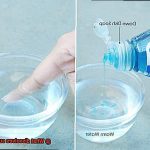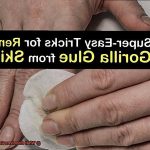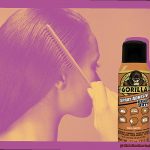Sick of that stubborn hair glue residue?
No worries, we’ve got your back. Dissolving hair glue doesn’t have to be a nightmare.
In this blog post, we’ll show you an effective and safe way to get rid of that pesky adhesive. We’ll talk about the right solvents to use and give you step-by-step instructions on how to break down and remove hair glue from your strands or scalp.
Say goodbye to that sticky situation once and for all.
Different Types of Hair Glue
Contents
- 1 Different Types of Hair Glue
- 2 Commercial Adhesive Removers for Hair Glue Removal
- 3 Natural Remedies for Dissolving Hair Glue
- 4 DIY Solutions to Dissolve Hair Glue
- 5 The Importance of Patience When Removing Hair Glue
- 6 Cleaning and Conditioning After Hair Glue Removal
- 7 Professional Advice on Removing Hair Glue
- 8 Conclusion
When it comes to achieving the perfect hairstyle, hair glue is a go-to adhesive for many individuals. Whether you’re attaching hair extensions, weaves, or wigs, choosing the right type of hair glue is essential for a secure and long-lasting hold. In this article, we will delve into the world of hair glue and explore its different types, each with its own unique characteristics and benefits.
Liquid Hair Glue: Versatile and Invisible
Liquid hair glue is a popular choice for many stylists and individuals alike. It comes in a liquid form and is applied using a small brush or applicator. This type of hair glue offers excellent flexibility during application, allowing for easy adjustment and control. Once dry, liquid hair glue becomes virtually invisible, providing a seamless and natural-looking result. It is commonly used for attaching wefts or tracks of hair extensions onto the natural hair.
Gel Hair Glue: Strong Hold for Intricate Styles
If you’re looking for extra hold and support, gel hair glue is your best bet. With its thicker consistency, gel hair glue offers a stronger bond, making it ideal for intricate hairstyles like updos or ponytails. This type of glue can be applied using a comb or brush and can be molded or shaped before it dries completely. Gel hair glue ensures your hairstyle stays in place throughout the day, no matter how complex or elaborate.
Tape-in Hair Glue: Quick and Temporary Solution
For those who prefer a temporary solution, tape-in hair glue is a game-changer. It comes in the form of double-sided adhesive tape strips that are applied to the weft of the hair extension. The tape is then pressed against the natural hair for a secure attachment. Tape-in hair glue offers a quick and easy application process, making it perfect for those who want to change their look temporarily or experiment with different styles without long-term commitment.
Fusion Bonding Hair Glue: Seamless and Long-lasting

When it comes to permanent hair extensions, fusion bonding hair glue is the go-to choice. This method involves attaching individual strands of hair extensions to small sections of natural hair using a heating tool and keratin-based adhesive. Fusion bonding provides a seamless and natural-looking result, as the extensions blend seamlessly with your own hair. This type of hair glue offers long-lasting hold and durability, making it suitable for those who want a more permanent solution.
Cold Fusion Hair Glue: Gentle and Damage-free
If you have delicate or damaged hair, cold fusion hair glue could be the perfect option for you. Similar to fusion bonding, cold fusion does not require heat during the installation process. Instead, ultrasonic waves or cold fusion tools are used to bond the extensions to the natural hair. This method is considered gentler on the hair and minimizes the risk of damage or breakage.
Commercial Adhesive Removers for Hair Glue Removal
There’s a range of commercial adhesive removers out there that are specifically designed to tackle the task of hair glue removal. Let’s take a closer look at these magical solutions and discover how they can save the day.
One mighty option in the world of adhesive removers is good old acetone. This powerful solvent is a go-to choice for many when it comes to dissolving hair glue. Its ability to break down a wide range of adhesives is unmatched. However, proceed with caution. Acetone can be harsh on your hair and scalp, so use it carefully and follow the instructions provided.
If you’re looking for a gentler alternative, citrus-based adhesive removers might just be your new best friend. These removers contain natural citrus extracts that work their magic in breaking down the glue without causing excessive damage to your precious locks. Plus, they often have a pleasant scent – talk about a win-win.
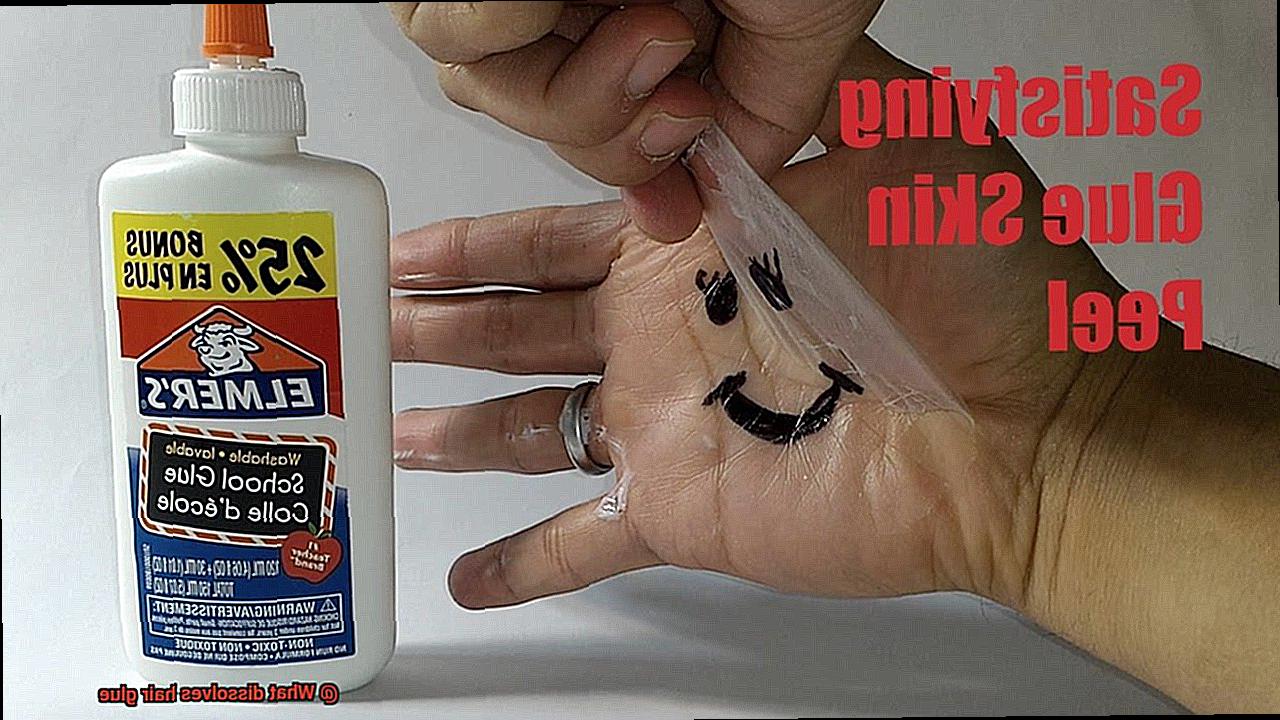
But wait, there’s more. Some commercial adhesive removers take things a step further by infusing their formulas with oils or moisturizing agents. These added ingredients not only dissolve the glue but also provide some much-needed hydration for your hair. It’s like giving your tresses a spa treatment while bidding adieu to that stubborn glue.
Before you dive headfirst into using any adhesive remover, it’s crucial to do a patch test first. Apply a small amount of the remover on an inconspicuous area of your hair or scalp to check for any adverse reactions or sensitivity. Safety first, my friends.
Now, let’s talk strategy. Removing hair glue may require some patience and persistence. In some cases, you may need to apply the adhesive remover multiple times to fully dissolve and remove the glue. Don’t throw in the towel too soon – your dedication will pay off in the end.
Once you’ve successfully bid farewell to the glue, don’t forget to give your hair some extra love. Thoroughly wash and condition your hair to remove any residue and restore its natural health and luster.
Natural Remedies for Dissolving Hair Glue
Fret not, for there are natural remedies that can help dissolve that adhesive mess without resorting to harsh chemicals. Let’s delve into the world of gentle and non-toxic solutions that will have your hair feeling free and fabulous in no time.
First up, we have the power of oils. Coconut oil, olive oil, and baby oil are all fantastic options for breaking down hair glue. Simply apply a generous amount of oil to the affected area, let it sit for a few minutes, and then gently comb out the softened glue. It’s like a luxurious spa treatment for your hair.
If you’re looking for something with a bit more acidity, vinegar is your go-to remedy. Mix equal parts vinegar and warm water, dab it onto the glued area, and let it work its magic. After a few minutes, comb out the softened glue and bid farewell to that sticky mess.
Lemon juice is another natural superhero when it comes to dissolving hair glue. Its high acidity weakens the adhesive bond, making it easier to remove. Simply squeeze fresh lemon juice onto a cotton ball or cloth, dab it onto the affected area, wait a few minutes, and comb out the softened glue.
For those tough glue battles, baking soda is here to save the day. Create a paste by mixing baking soda with water, apply it to the glued area, let it sit for several minutes, and rinse off with warm water. Repeat if necessary until the glue is completely dissolved.
And let’s not forget about the soothing powers of aloe vera gel. Apply a generous amount onto the glued area, massage it in, wait a few minutes, and comb out the softened glue. Your hair will thank you for this extra dose of hydration.
It’s important to remember that natural remedies may take a bit more time and patience compared to commercial adhesive removers. Multiple applications may be needed for complete removal, so don’t give up.
Before you dive into these natural remedies, it’s always a good idea to do a patch test on a small area of your skin to make sure you’re not allergic or sensitive to the ingredients. And if you’re not sure which method is best for your hair type, consult with a professional hairstylist for guidance.
DIY Solutions to Dissolve Hair Glue
Hair glue can be a lifesaver for achieving flawless hairstyles, but it can also leave behind a stubborn and sticky mess when it’s time to remove it. Fortunately, there are several DIY solutions that can effectively dissolve hair glue without causing damage to your precious locks. In this article, we will explore non-toxic methods using common household ingredients. So, grab your apron and get ready to bid farewell to that sticky situation.
Acetone: The Heavyweight Solution
Acetone is a popular go-to for dissolving hair glue. However, it’s important to use pure acetone rather than nail polish remover, as the latter often contains additional ingredients that are less effective. Soak a cotton ball or pad in pure acetone, apply it to the glued area, and let it sit for a few minutes. Gently comb or peel away the dissolved glue, repeating the process if necessary.
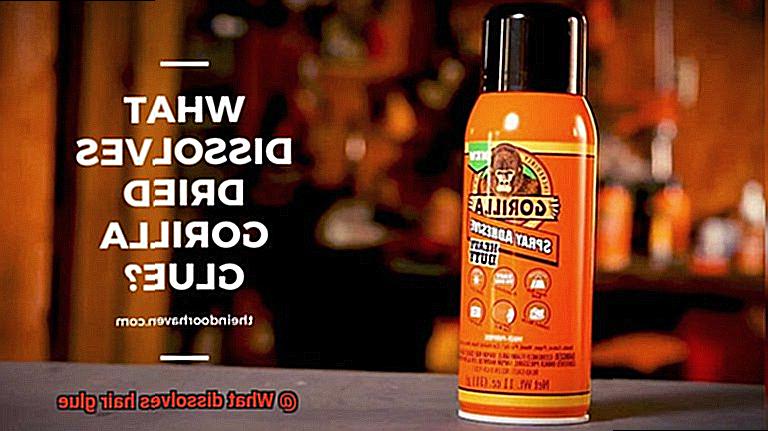
Rubbing Alcohol: The Versatile Alternative
When acetone isn’t readily available, rubbing alcohol can come to the rescue. Soak a cotton ball or pad in rubbing alcohol and apply it to the glued area. Allow the alcohol to sit for a few minutes before gently combing or peeling away the dissolved glue.
Olive Oil or Coconut Oil: Nature’s Remedy
If you prefer natural remedies, olive oil or coconut oil can work wonders in dissolving hair glue. Generously apply either oil to the glued area and let it sit for about 30 minutes. Then, using a fine-toothed comb, gently comb through the hair to remove the dissolved glue.
Lemon Juice: The Acidic Breakdown
Harnessing the power of acidity, lemon juice can effectively break down hair glue’s adhesive properties. Squeeze fresh lemon juice onto the glued area and massage it in gently. Allow the lemon juice to sit for a few minutes before combing or peeling away the dissolved glue.
Testing and Patience: The Essential Tips
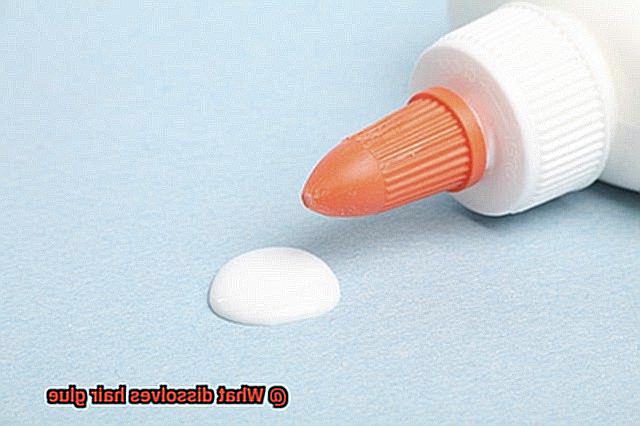
Not all DIY solutions may work for every type of hair glue, so it’s crucial to test any solution on a small, inconspicuous area first. Additionally, stubborn hair glue may require multiple attempts or a combination of different solutions. Be patient and repeat the process as needed.
The Importance of Patience When Removing Hair Glue
We’ve all experienced the sticky nightmare of removing hair glue. But before you dive in headfirst, it’s important to understand why patience is your best ally in this process. Rushing can lead to damage to your precious locks and scalp, which is something none of us want. So let’s explore why patience is crucial when removing hair glue.
Protecting Your Hair and Scalp:
Hair glue is designed to be strong and long-lasting, requiring time and care to dissolve and remove completely. Rushing the process can result in the glue becoming sticky and tangled in your hair, making it even more challenging to remove. By taking your time, you minimize the risk of hair breakage or damage.
Avoiding Harsh Chemicals or Excessive Force:
In moments of impatience, you may be tempted to use excessive force or harsh chemicals to speed up the removal process. However, this can weaken your hair strands and lead to scalp burns. By exercising patience, you allow for a gentle approach that ensures the health and integrity of your hair.
Thoroughly Clean Your Hair and Scalp:
Patience allows for a thorough cleansing of your hair and scalp after removing the glue. This step is crucial because any remnants of glue left behind can cause itching, dandruff, or product buildup. By giving yourself enough time, you can ensure that your hair is clean and free from any residue or adhesive.
Cleaning and Conditioning After Hair Glue Removal
After successfully removing that pesky hair glue, it’s time to show your hair some much-needed love. Cleaning and conditioning are essential steps in the post-removal process, ensuring your locks are left feeling fresh and fabulous. Let’s dive into the necessary steps for restoring your hair’s natural health and appearance.
- Clarifying Shampoo: Start by using a clarifying shampoo to remove any residue or build-up from the hair, including remnants of the hair glue. Thoroughly massage the shampoo into the hair and scalp, paying extra attention to areas where the glue was stubborn. Rinse thoroughly for squeaky-clean strands.
- Deep Conditioning Treatment: After clarifying, it’s crucial to replenish your hair with moisture. The glue removal process can leave your strands dry and damaged, so a deep conditioning treatment is a must. Apply a generous amount of conditioner from roots to ends, focusing on the ends where damage is most evident. Leave the conditioner on for at least 10 minutes before rinsing it out, allowing it to work its magic.
- Embrace Natural Texture: Give your hair a break from heat-styling tools after cleaning and conditioning. The glue removal process weakens the hair, and subjecting it to heat can cause further damage. Embrace your natural texture and try heat-free hairstyles for a few days to allow your strands to recover.
- Regular Oil Treatments: Take your hair’s recovery up a notch by incorporating regular oil treatments into your routine. Natural oils like coconut oil or argan oil are fantastic options for deep hydration. Focus on applying the oil to the ends of your hair and leave it on overnight for maximum nourishment. These treatments not only restore moisture but also aid in detangling and promoting hair growth.
- Healthy Diet and Lifestyle: Remember, healthy hair starts from within. Maintain a balanced diet rich in vitamins and minerals to support overall hair health. Include foods like leafy greens, nuts, and seeds in your meals to provide your hair with the nourishment it needs. Additionally, avoid excessive heat styling and chemical treatments to prevent further damage.
- Seek Professional Advice: If you’re unsure about the best way to care for your hair type after glue removal, don’t hesitate to seek professional advice. Consulting with a hairstylist or trichologist will give you personalized recommendations on products and treatments tailored to your needs.
Professional Advice on Removing Hair Glue
Before you resort to drastic measures like cutting, it’s crucial to seek professional advice for safe and effective methods. Taking the time to gather professional advice will save you from potential hair and scalp damage in the long run.
Why Seek Professional Advice?

Hair glue is a powerful adhesive designed to hold extensions or wigs in place. Improper removal techniques can cause unnecessary stress and damage to your natural hair and scalp. By consulting with a professional, you can ensure you’re using the correct approach for your specific situation.
The Importance of Patience:
Removing hair glue requires patience and caution. Rushing the process may lead to more difficulties and potential harm to your hair. Take your time and follow the recommended steps carefully for the best results.
Necessary Supplies:
Before you begin, gather all the necessary supplies. You’ll need a wide-tooth comb, acetone-based nail polish remover, olive oil or coconut oil, cotton balls or pads, and a clarifying shampoo. Having these items at hand will make the process smoother and more efficient.
Step-by-Step Removal Techniques:
There are various methods for removing hair glue, depending on the type of glue, your hair type, and personal preferences. Here’s a step-by-step guide to two commonly used techniques:
Acetone Method:
- Apply acetone-based nail polish remover onto a cotton ball or pad.
- Gently dab the cotton ball onto the glued area, allowing the acetone to penetrate.
- Use a wide-tooth comb to gently loosen the glue from your hair strands.
- Repeat these steps until all the glue is removed.
Oil Method:
- Apply olive oil or coconut oil directly onto the glued area.
- Allow it to sit for a few minutes, allowing the oil to dissolve the glue.
- Use a wide-tooth comb to gently untangle your hair, gradually loosening the glue.
- Rinse your hair with a clarifying shampoo to remove any remaining residue.
Test and Seek Professional Help:
Before using any product or technique extensively, it’s essential to perform a patch test. This helps identify any sensitivities or allergies you may have. If you encounter difficulties or experience discomfort during the removal process, don’t hesitate to seek professional help.
fLfTTt3Dw6g” >
Also Read: How To Remove Glue In Hair Extensions?
Conclusion
In conclusion, banishing hair glue nightmares is easier than you think. Armed with the right knowledge and techniques, you can effortlessly dissolve and eliminate hair glue without wreaking havoc on your precious locks or scalp.
Hair glue comes in various forms, each with its own unique qualities and advantages. Liquid hair glue is a chameleon, disappearing seamlessly into your strands. Gel hair glue delivers an ironclad grip for intricate styles. Tape-in hair glue offers a quick fix that’s easily removable. Fusion bonding hair glue creates a flawless and long-lasting bond. And cold fusion hair glue treats your tresses gently, leaving them damage-free.
When it comes to removing hair glue, commercial adhesive removers specially formulated for this purpose are your best bet. Enter acetone – a powerhouse solvent capable of dissolving a wide array of adhesives. But beware, wield it with caution. For those seeking a gentler alternative, citrus-based adhesive removers infused with natural citrus extracts offer an alluring option. Some commercial removers even boast oils or moisturizing agents that hydrate your mane while dissolving the stubborn glue.
If you prefer to go au naturel, oils like coconut oil or olive oil work wonders in breaking down the pesky hair glue. Vinegar’s acidity weakens the adhesive bond, while lemon juice unleashes its high acidity to dissolve the sticky situation. Baking soda swoops in as a trusty sidekick, creating a paste that obliterates even the most stubborn remnants of glue. And let’s not forget about our friend aloe vera gel – providing hydration while simultaneously dismantling the adhesive.
Patience is key when removing hair glue to safeguard your strands from harm’s way. Rushing through the process can result in excessive force or harsh chemicals that weaken your precious locks. After removal, it’s crucial to thoroughly cleanse and condition your hair to restore its natural radiance and vitality.
Before resorting to drastic measures like reaching for the scissors, seeking professional advice is paramount. Consulting with a seasoned hairstylist or trichologist ensures you receive safe and effective methods tailored specifically to your unique situation.



